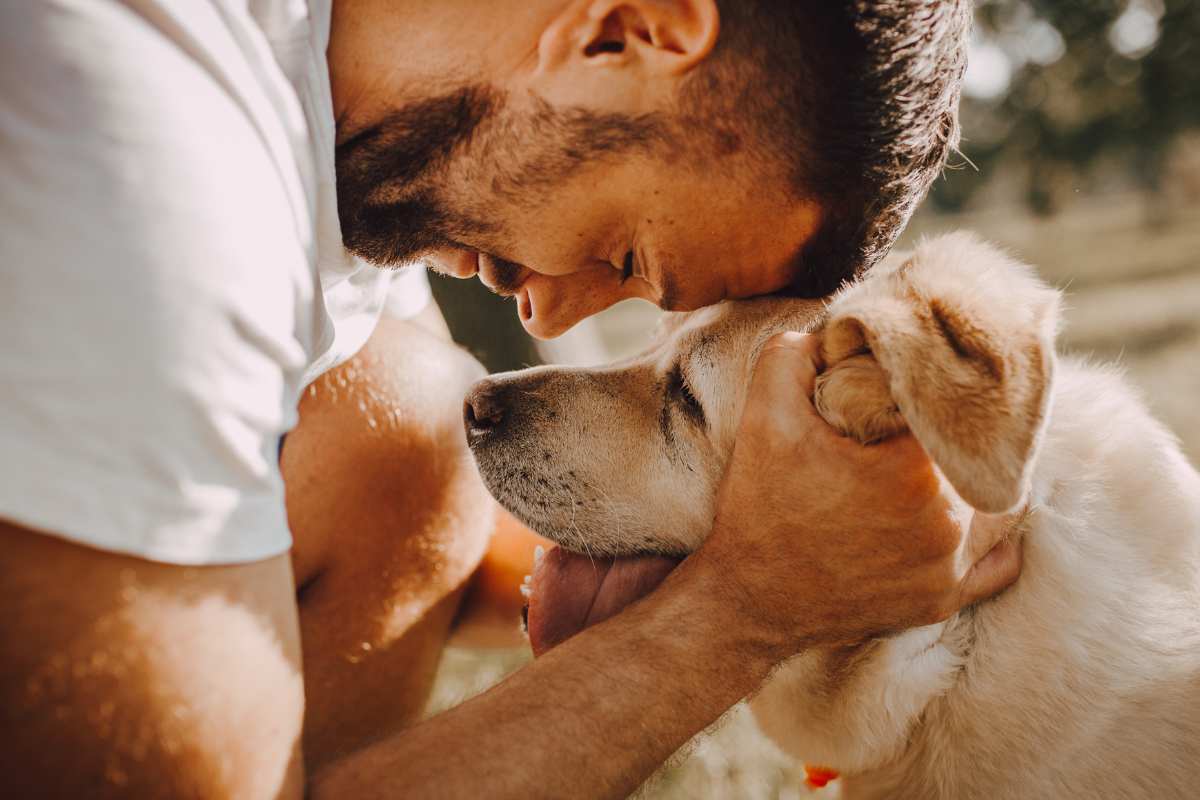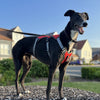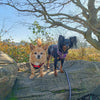Tips For Walking An Older Dog

As our furry companions gracefully age, their needs change, and so does their approach to daily activities. One essential aspect of their routine that requires thoughtful consideration is daily walks. Walking an older dog comes with its unique set of challenges and considerations. In this article, we will explore helpful tips to ensure that your senior canine friend enjoys their walks while maintaining their health and happiness.
Consult with your Veterinarian - Before embarking on a new exercise routine with your older dog, it's crucial to consult with your veterinarian. They will provide valuable insights into your dog's health, addressing any specific conditions or limitations they may have. Your vet can recommend an appropriate exercise plan that suits your dog's individual needs, taking into account factors such as arthritis, joint problems, or heart conditions.
Choose the Right Walking Surface - Older dogs may have joint issues, making it essential to choose suitable walking surfaces. Opt for soft and even surfaces like grass or dirt paths, which are gentler on your dog's joints compared to concrete or pavement. Avoid steep hills and opt for flat terrain to prevent unnecessary strain on your senior dog's muscles and joints.
Adjust the Length and Frequency of Walks - Unlike their more energetic younger counterparts, older dogs may not have the stamina for long walks. Break their daily exercise routine into shorter, more frequent walks. Aim for several short walks throughout the day, allowing your dog to enjoy the outdoors without overexerting themselves. This approach helps prevent fatigue and minimises the risk of injury.
Keep an Eye on the Weather - Extreme weather conditions can affect your older dog's comfort and well-being. During hot weather, schedule walks in the early morning or late evening when temperatures are cooler. In colder weather, consider investing in a cozy dog sweater or jacket to keep your senior pup warm. Always bring water for both you and your dog, regardless of the weather, to stay hydrated.
Use a Supportive Harness - Investing in a supportive harness can make a significant difference in your older dog's walking experience. A harness distributes pressure more evenly across your dog's body, reducing strain on their neck and spine. Look for designs that provide additional support around the chest and abdomen. This can be particularly beneficial for dogs with arthritis or mobility issues.
Consider Joint Supplements - If your veterinarian recommends it, incorporate joint supplements into your senior dog's diet. These supplements, often containing glucosamine and chondroitin, can help support joint health and alleviate arthritis symptoms. However, always consult your vet before introducing any new supplements to your dog's routine, as individual needs may vary.
Allow for Sniffing and Exploration - Walking isn't just about physical exercise; it's also an opportunity for mental stimulation. Older dogs may not be as interested in covering long distances, but they still appreciate the chance to explore their surroundings. Allow your senior dog to sniff around and investigate their environment at their own pace, providing mental enrichment and enjoyment during the walk.
Watch for Signs of Discomfort - Older dogs may not always communicate discomfort as clearly as younger ones. Keep a close eye on your dog during walks and be attentive to signs of fatigue, limping, or any unusual behavior. If you notice any issues, it's crucial to adapt the walk accordingly or, if necessary, consult your veterinarian to address potential health concerns.
Practice Gentle Exercises - Incorporate gentle exercises into your senior dog's routine to help maintain flexibility and muscle tone. Slow, controlled movements like sit-to-stand exercises or easy stretches can be beneficial. These activities are not only physically beneficial but also provide a bonding opportunity between you and your furry friend.
Maintain a Consistent Routine - Older dogs thrive on routine, and maintaining a consistent walking schedule can contribute to their overall well-being. Set a daily routine for walks, feeding, and rest, providing your senior dog with a sense of predictability and security. Consistency is especially important for dogs dealing with age-related anxiety or cognitive decline.
Walking an older dog requires a thoughtful and considerate approach to cater to their changing needs. By consulting with your veterinarian, choosing suitable walking surfaces, adjusting the length and frequency of walks, and incorporating supportive measures like harnesses and supplements, you can ensure that your senior canine companion enjoys their walks while maintaining their health and happiness. Remember to observe your dog's behaviour, adapt the routine as needed, and cherish the precious moments spent together on gentle strolls.
-
Posted in
dog walking, older dog, senior dog





